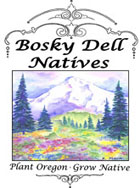
West Linn, Oregon
PHONE 503-638-5945
FAX 503-638-8047
9am to 5pm M-Sat.
12 to 5pm Sun.
(Closed Sundays in November, December, January, February)
Gardens
for Birds
 |
|
23321 SW Bosky Dell Ln. West Linn, Oregon PHONE 503-638-5945 FAX 503-638-8047 9am to 5pm M-Sat. 12 to 5pm Sun. (Closed Sundays in November, December, January, February) |
| Home |
| Photo Gallery |
| Greeting Cards |
| About Us |
| Plant Lists |
|
Hummingbird Gardens |
|
Gardening for Birds |
| Butterfly Gardens |
| Erosion Control |
| Lewis and Clark |
| Fundraisers |
| handouts |
| Websites |
| Native Plant Recipes |
| Judy Bluehorse |
| Guestbook |
| Mailing List |
| Employment Opportunities |
| Field's Creek |
•Member, Oregon Association of Nurseries •Winner of the Green Heron Award for contributions to the protection and restoration of the Tualatin watershed - Recipient of the Citizenship Award by SOLV - Recipient of the Conservation Award by DAR Women Owned Small Business registered with Dunn & Bradstreet, CCR, SBA and ORCA |
||||
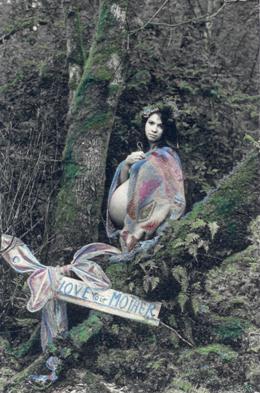
Lory Duralia
|
This web site was lovingly created by Bosky Dell Natives. It was designed to be used as a tool to assist children, teachers, and stewards of the earth with valuable information, enabling us all to participate in the preservation of our native flora and re-establish habitat for our precious wildlife. We are all stewards of the earth. This stewardship needs to be passed from the old to the young. The relationship between earth and people/humans needs to be a healthy balance of give and take. My hope is that this site will inspire and assist with the healing of the earth and the spirit of humankind. The song of a bird can nurture your heart, soul, and mind. Connect yourself with earth. Much of our native flora and fauna are threatened due to habitat loss. As we build and develop, we must replenish what has been destroyed or removed. (Be conscientious when you are building, because displaced wildlife will need your assistance in finding a new home where your future house will stand.) Create a backyard sanctuary for yourself and your backyard neighbors. Butterflies, birds, beneficial insects, and all other forms of life are depending on us. Naturescaping can take place anywhere. Your backyard, a school courtyard, the entrance to an office building, open meadows, freeway entrance ramps, etc. -- every little pocket makes a difference. We must take care of the earth so that the earth can continue to take care of us! Lory Duralia |
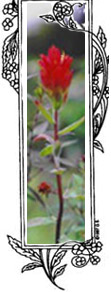 |
||
|
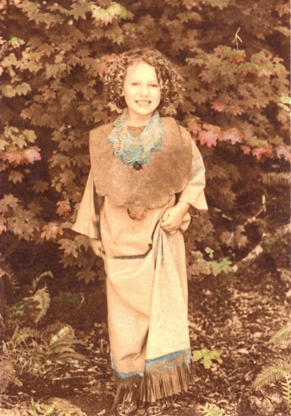 |
|
"I've gone native and I can't fail if I stay on this native trail." |
|
-Madeline Age 6 |
|
Photo by Lory Duralia |
|
"I'm an Oregon farmer!" |
|
-Charles Age 2 |
|
Photo by Lory Duralia |
|
Why Go Native? |
|
|
|
 |
 |
 |
 |
 |
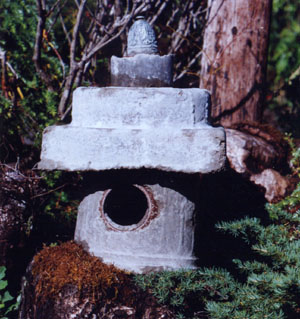
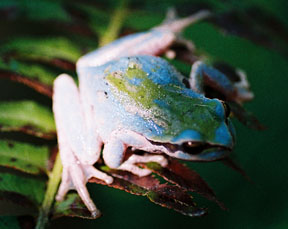 photo courtesy Dept. of Fish and Wildlife Blue Tree Frog | This beautiful tree frog, native to Oregon (yes, we know, they're green, but this one is BLUE!), photographed by Fish and Wildlife, is living happily in our pond here at Bosky Dell. We love our frogs! We also have endangered red-legged frogs, not to mention butterflies and birds who regularly visit. |
Bosky Dell Natives is proud to announce our awards for natural gardening inspiration and design:
•Portland Impact's 4th Annual Summer Garden Party 2004 - 3rd place
•Yard, Garden & Patio Show 2000 - Best of Show
•Yard, Garden & Patio Show 1998 - Best of Division
•Yard, Garden & Patio Show 1997 - 1st runner-up
•Best of Show, Fred Meyer, 1993 (assisted with display)
Hi, Lory.
As great as your website is, your nursery and
your staff are even greater. I have landscaped my 17000 sq ft suburban lot
almost entirely from your nursery over the last 7 years. Every week, every
month, every season is a joy. I have a "pocket woods" in back--the Doug fir and
cedar overstory was there when I moved in. I've added the shrubs and bulbs and
perennials to fill out the understory. I also have a "vernal meadow," a
mini-prairie, a wetlands complete with large (manmade) stream, pond and
falls--have about 250 PNW native species, almost all of which I bought from you.
I've got all kinds of wildlife here including over 40 spp of birds that visit.
I've got flowers, foliage, berries, mosses and lichens, trees, shrubs,
ground-covers--in spring I have thousands of wildflowers that bloom; in the fall
I have berries and mushrooms galore, etc. I did one section at a time and it is
now mostly filled in and on its way to maturity. Truly a rewarding endeavor. And
because they are natives situated in the right mini-habitats, I watered only
once in 2005, once in 2004--I use no pesticide, herbicide, slug killers, or
fertilizer--the whole yard is in balance, it seems. I encourage anyone
interested in this ecologically (and psychologically) rewarding approach to
gardening to go for it. Dig in. Take it a few square feet at a time and before
you know it, you will get there. I started with a typical suburban yard--all
vinca, ivy, lawn and barkdust. None of that remains. Instead I have what one
visitor called a "national park" three steps from my own back door. Couldn't be
happier! Thank you, Lory, for your guidance, your great selection, your
knowledge, your foresight in starting this wonderful business when far fewer
people had considered gardening with natives. I could never have created my
paradise without you!
Thanks--
Jozie Rabyor in Vancouver.
To Plant Lovers in the Northwest,
I have to let you know that Bosky Dell Natives walks their talk!!! Not only
do the supply the largest selection of Northwest Natives that I've been able
to locate, they practice the type of environmentally sensitive harvest,
propagation, salvage, and gather techniques that are necessary for the
survival of the plant that make the Northwest so beautiful and unique. As
if that was not enought, they support many many local non-profit
organizations with an incredibly generous policy of pricing for fundraising
native plant sales.
I am associated with the Skyline Grange, the only meeting space available to our community. Over the last three years of Bosky Dell supported plant sales, we have been able to raise enough money to restore and repair large sections of this much needed building. Every year dealing with the Bosky Dell Staff has been pleasant, educational, and for us very very profitabble. Each year's fundraiser has had approximately a 33% growth over the previous years.
This is truly a win/win sale. Bosky Dell introduces new customers to native gardening; our grange becomes more and more the community gathering place we would like it to be; and gardens in our area become enriched with native species that support the return of native butterflys and birds.
I cannot thank Lori and her staff enough for this truly enjoyable yearly event.
Kelly O'Neil
Skyline Grange
Portland, Or
Staff from both the nursery and from Fish and Wildlife worked together to create a small habitat that is low maintenance, drought tolerant, beautiful, and welcoming to native wildlife. To view this garden, visit the Vancouver office of the U.S. Fish and Wildlife Service at 1211 Cardinal Ct.
| click on an image for an enlarged view | ||
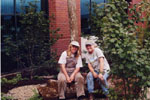
|
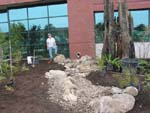
|
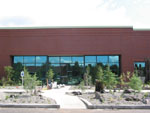
|
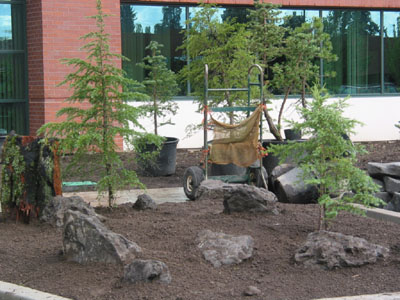
|
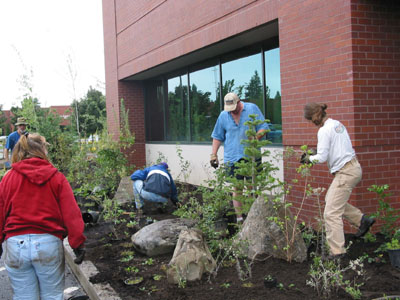
|
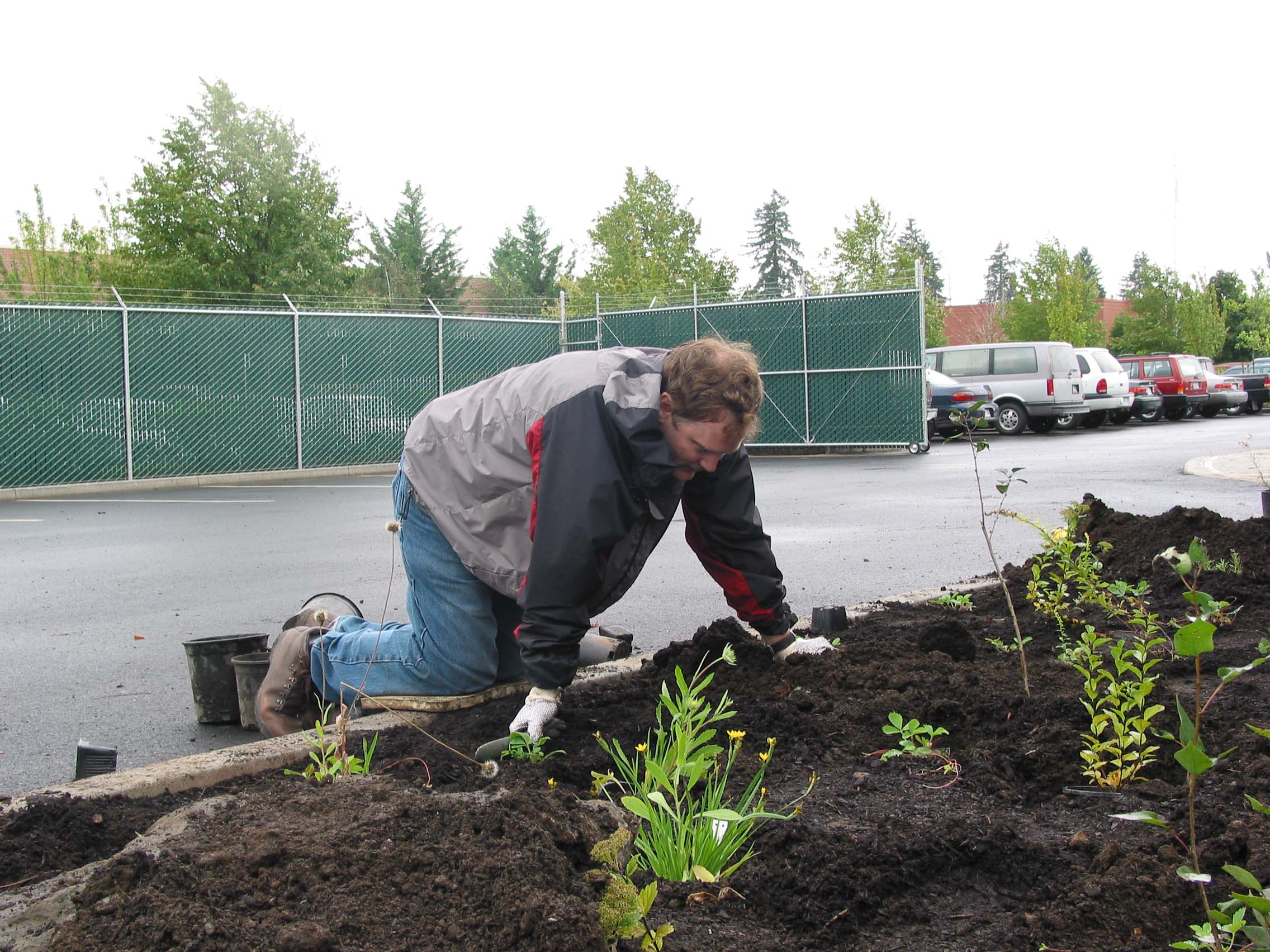
|
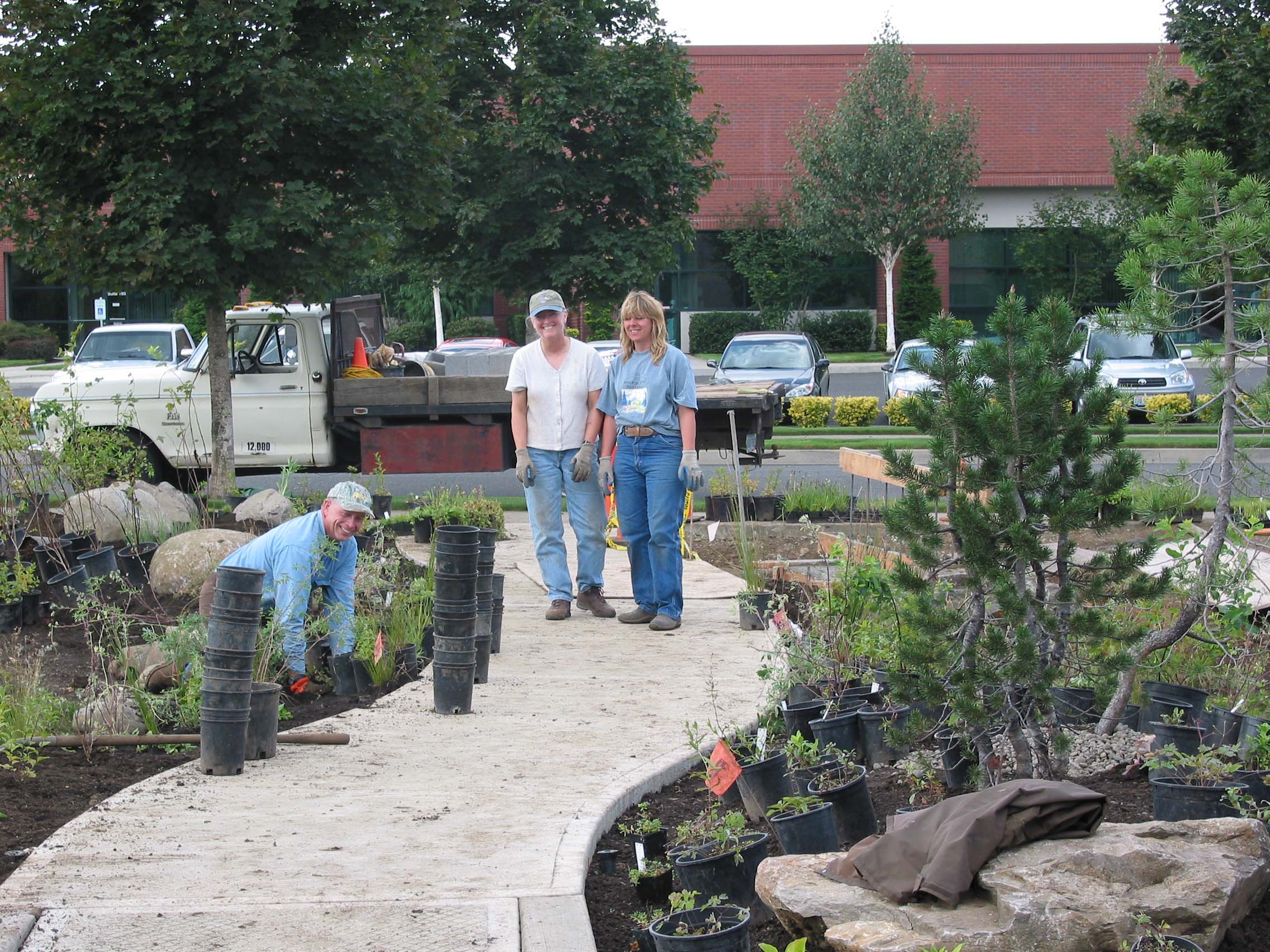
|
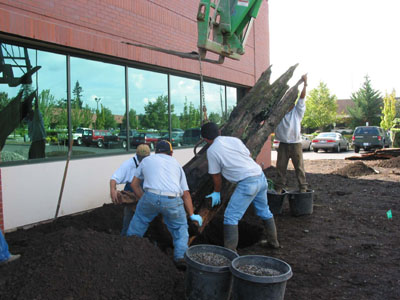
|
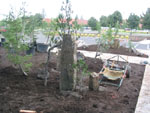
|
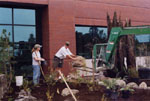
|
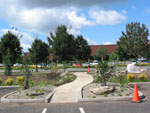
|
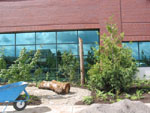
|
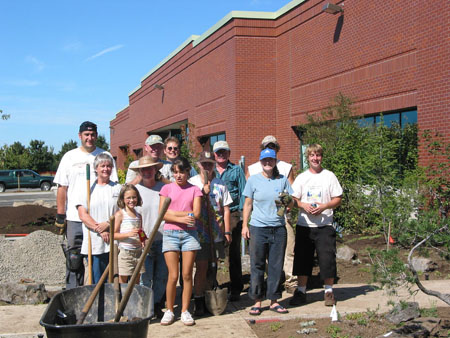
|
||
And now....some one year updated pics |
||
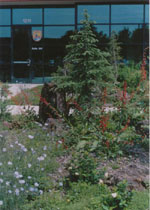
|
click on a picture for an enlarged view 
|
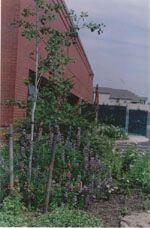
|
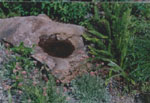
|
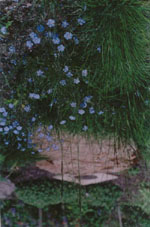
|
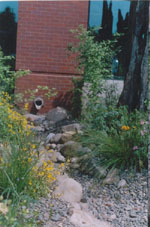
|
Red-legged frogs, long-toed salamanders, tree frogs, garter snakes, alligator lizards, yellow warblers, rufous hummingbirds, house finches, American robins, downy woodpeckers, red-tailed hawks, creek dogwood, sword fern, willow, big-leaf maple, bleeding heart, snowberry, nootka rose, evergreen huckleberry - these are just a few of the many species of wildlife and plants that are native to Oregon, and represent just a small part of the amazing biological diversity that may exist in our own backyards!
Both globally and locally, many of our plant and wildlife species are declining due to many factors, including harmful chemicals, loss of habitat, and the introduction of the non-native species such as English ivy and bullfrogs. What can you do to help stop the further loss of our native species? As the saying goes, every little bit helps, and this holds true as well if you want to provide a home for native plants and wildlife in your backyard. Providing water, sch as a small pond, can attract an amazing array of wildlife, including frogs, birds, dragonflies and butterflies just to name a few. Is your yard sunny or shady or both? If it is shady, you could plant it with shade loving plants (snowberry, red elderberry) that also provide shelter and food for wildlife, since the berries from both plants are eaten by birds and mammals.
 To make sure you will attract smaller creatures such as frogs and salamanders, don't forget to place tree limbs and decaying logs (they can be as small as 1' x 2') scattered throughout the area. Though many of us like to be neat and tidy, we should remember that nature often isn't, and those fallen limbs and leaves on the ground also provide places for frogs to hide, add nutrients to the soil and will save you money in the long run, since you wont' need to add as much mulch and fertilizer.
To make sure you will attract smaller creatures such as frogs and salamanders, don't forget to place tree limbs and decaying logs (they can be as small as 1' x 2') scattered throughout the area. Though many of us like to be neat and tidy, we should remember that nature often isn't, and those fallen limbs and leaves on the ground also provide places for frogs to hide, add nutrients to the soil and will save you money in the long run, since you wont' need to add as much mulch and fertilizer.
The size of the area that you plan with natives doesn't have to be large, for even small areas will add to the biological diversity not only in your backyard, but also to our region. Seeds from the shrubs and trees you plant can be scattered by the wind or by a bird or other animal, and will eventually provide food and shelter for wildlife in other areas. Besides increasing the diversity in your yard, you may also find you have created a soothing, peaceful space for yourself and your friends and family in which to sit back, relax and enjoy the wonders and beauty of nature.
Sue Beilke Biodiversity Project of Tigard
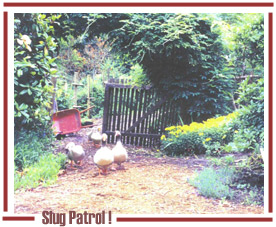
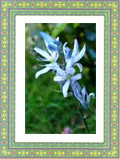 From the Journals of David Douglas
From the Journals of David Douglas
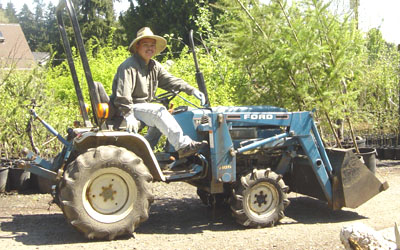
|
| The Great Wood Duck Nesting Box Project  | 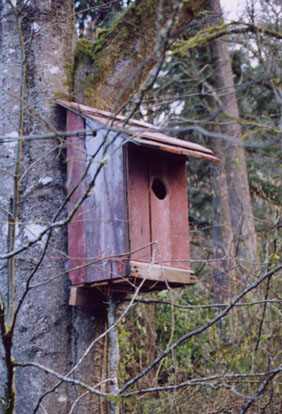 |
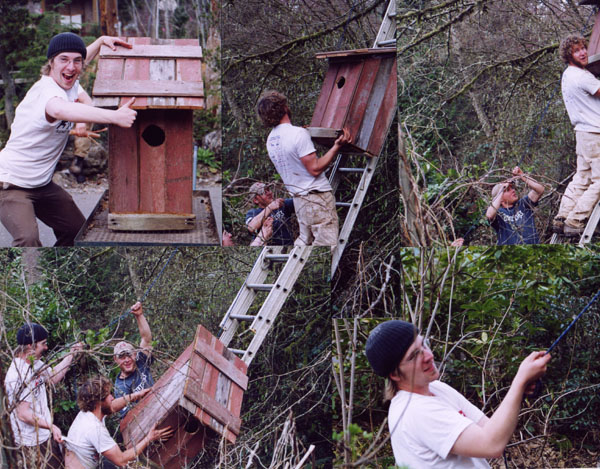 |
|
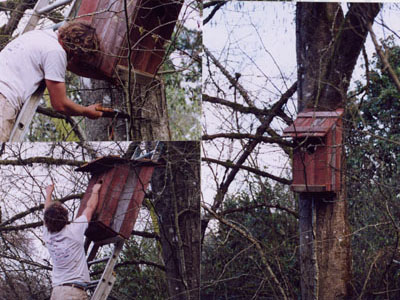 |
Chad and Ryan work mightily to hoist this marvelous Wood Duck nesting box to its resting place on a tree above the duck pond at the nursery. |